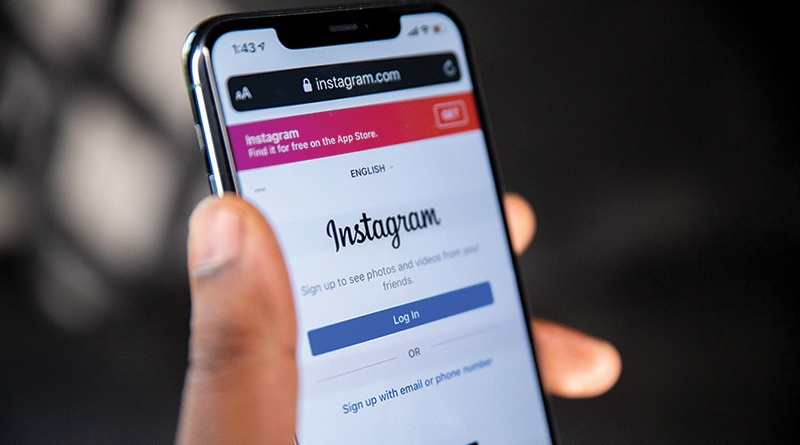These Restaurants Ban You For Posting Your Food on Instagram

Working its way into marketing strategies overall, the pervasive influence of Instagram has gotten into every nook and cranny, particularly that of the restaurant industry.
With the current profligate user base of 2.4 billion people across the globe, Instagram has entered into the arena of the major social platforms. This offers an enormous audience for a restaurant to showcase and promote their foods.
In addition, statistics show that 69 percent of the people within this category are more likely to take a photo of their food and post it on their social media, which innovative restaurant owners have been able to integrate.
According to Nathan Mercer, an expert in connectivity solutions at Truely eSIM, “Instagram has completely changed the way that restaurants connect with their patrons. The visual appeal and sheer scale of reach brought about by Instagram make the platform an indispensable tool of modern marketing.”
How Instagram Drives Restaurant Growth
Being far more visual, Instagram represents the perfect platform for presenting culinary delights so that every shown dish could become viral. Here is how it works.
1. Visual Marketing:
Mercer explains that “38 percent of Instagram users actively seek out food content,” citing data on Menu Tiger. Meaning, restaurants have an opportunity for audiences through high-quality pictures of dishes.
“A well-timed post can attract diners from miles away, turning a simple dish into an overnight sensation,” according to Mercer.
2. Customer Interaction
Instagram does more than just post photos—it does real-time interactions with the patrons through comments, likes, and shares, thereby building a community around the restaurant’s brand.
“Engaging with customers on social media creates a loyal following that feels personally connected to the restaurant,” says the Truely eSIM connectivity solutions expert.
3. Influencer Partnerships
Pairing with any food blogger and influencer increases a restaurant’s reach within no time as they reach an influencer’s follower base as well.
Mercer asserts, “Influencers bring credibility and a ready-made audience, making them invaluable partners in digital marketing.”
Case Studies: Restaurants That Say, ‘No More Pictures’
Not everything on the photo-taking front has been “sparkles and rainbows,” though. Some top-of-the-line establishments have even prohibited taking photos altogether as they think it’s interfering with the dining experience. Leading the pack:
1. The Waterside Inn – Berkshire, England
The three-Michelin-starred restaurant has banned Instagramming on the premises on grounds that the place should be intimate to give a dining experience. In a statement released, reasons have been cited as to let the diners be in focus at the food and the restaurant environment—just leave your phones behind.
2. Grenouillere Restaurant – La Madelaine-sous-Montreuil, France
Grenouillere has gone so far as to ban cell phones from its vicinity and not even in its lounge area to keep the unique dining environment unique. It was very important that the food and the act of eating be something, you know, you cherish and that’s it.
3. Take Dae – New York, USA
Take Dae in New York maintains a no-photos policy for influencers, meant to prevent disturbances. The idea is to ensure a peaceful, uninterrupted dinner for all guests.
4. Carthage Must Be Destroyed – New York, USA
This restaurant takes after the other New York spot and has also decided to ban cellphones, for the reason of making a “purer and fuller” experience according to the owners.
The Debate: Pros and Cons
The whole debate over an outrageous photo ban and Instagram interaction restriction inside the restaurants is right here. Here’s the view from both sides:
Pros
• Improves the dining experience in terms of focusing on the food and personal interaction.
• Ensures that exclusivity and specialty can be attached to the dining experience so that it becomes well-remembered.
• Lessens distractions, hence, allowing one to focus on their meal as well as their company.
Cons
• Loses out on free marketing and word-of-mouth promotion.
• Could be perceived as somewhat stifling and out of step with digital culture, and it is likely to alienate younger users.
• Hampers true customer engagement and spontaneous customer advocacy.
Commenting on this, Mercer adds,
“Even though Instagram has huge marketing firepower, it is important for restaurants to keep the very essence of why people eat out—to savor good food in a distinctive environment that enhances the overall experience.”
Reflecting on the Role of Instagram in Modern Dining
While, at the same time, dining is taking on an increasingly digital center, the distinction between maintaining the old-world etiquette of dining and using modern techniques of marketing to a restaurant becomes one of a small, if not infinitesimally fine, line.
Eventually, it is the brand values that a restaurant holds and the dining culture that is being fostered which can best decide the appropriateness of using Instagram to market. This digital dilemma is further fuelled by culinary circles, proving that for even the best of chefs and marketers, the perfect recipe remains elusive when it comes to eating.
